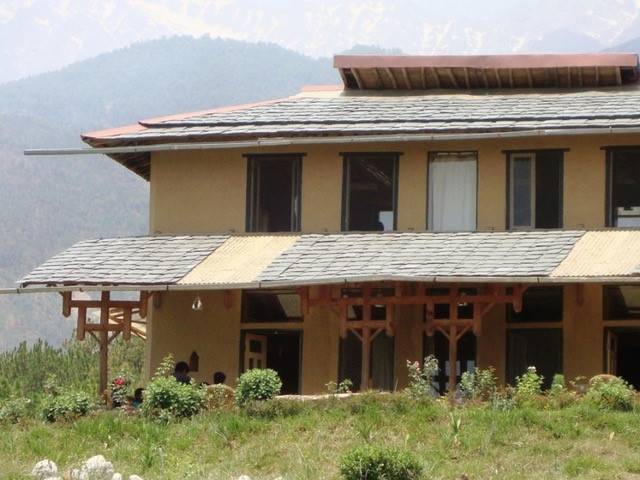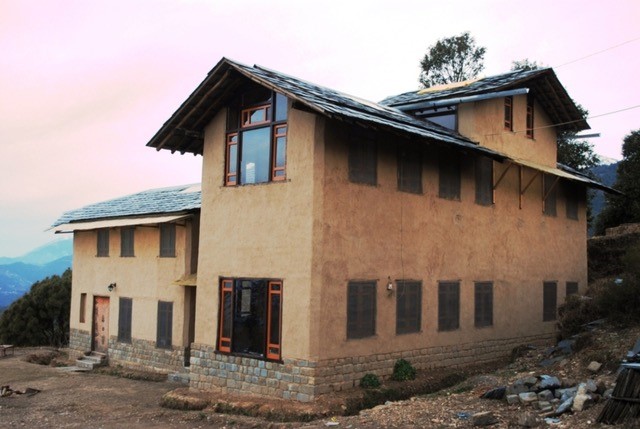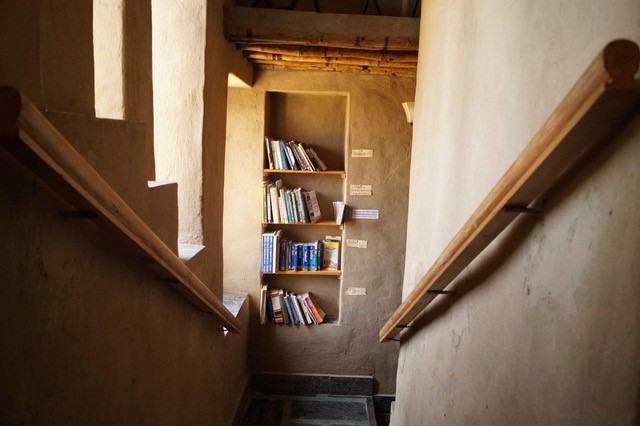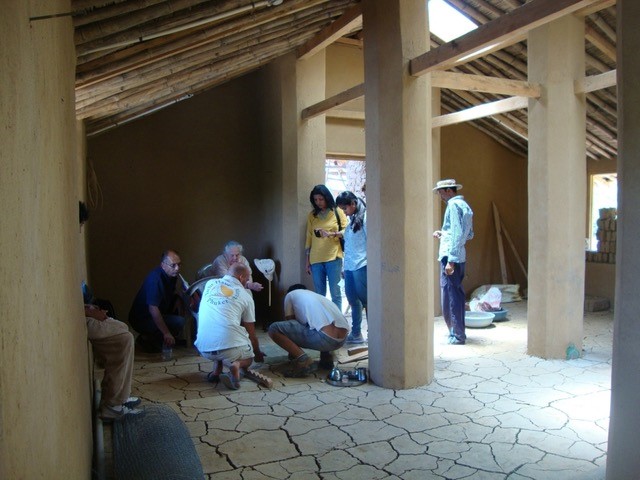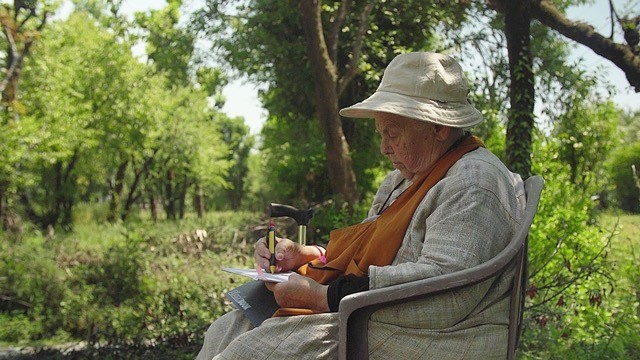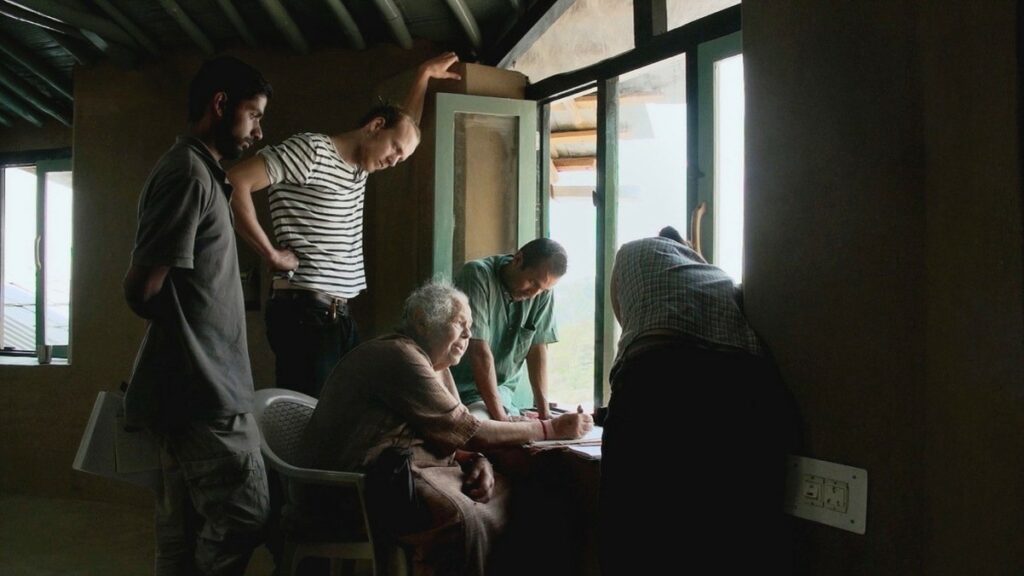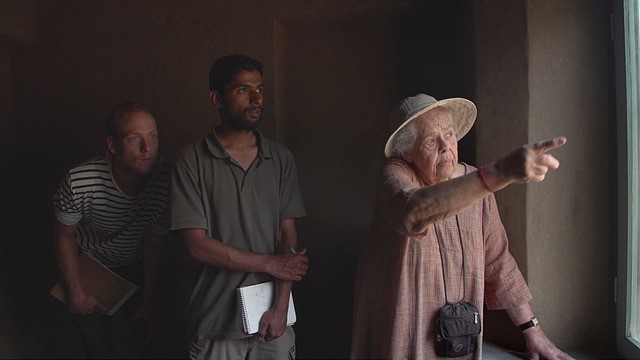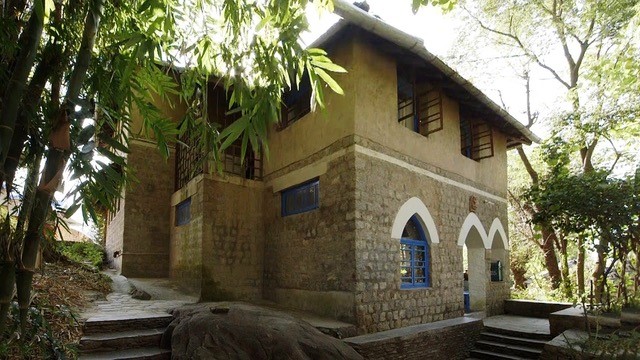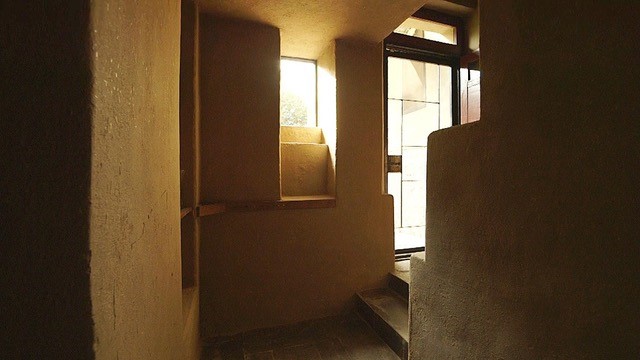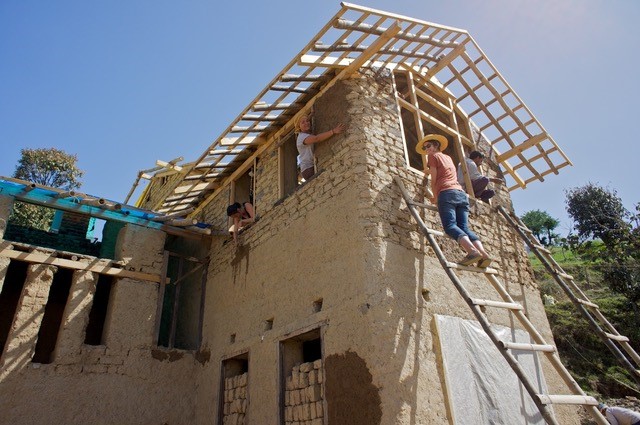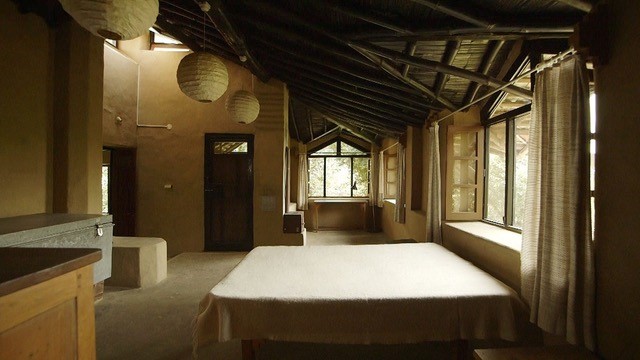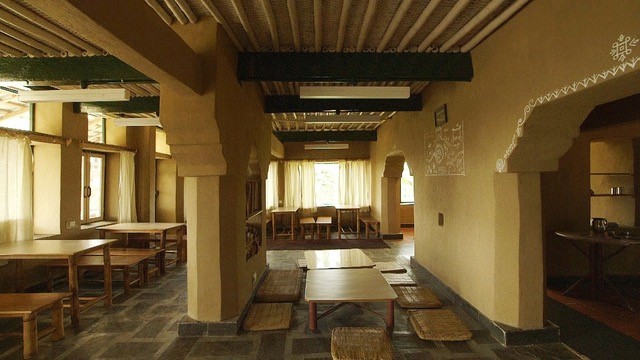In the realm of sustainable architecture, few figures stand out as prominently as Didi Contractor. This self-taught architect from Dharamsala, India, left an indelible mark on the field with her innovative approach to building with natural materials. On her third death anniversary, we reflect on the life and legacy of a woman who challenged conventional architectural norms and championed an eco-friendly approach to construction. Didi Contractor’s journey from an American-born artist to a renowned architect in the Himalayas is a testament to her passion for creating structures that harmonize with nature rather than compete against it. Her unique vision and dedication to sustainable practices continue to inspire architects and environmentalists alike, making her story as relevant today as it was during her lifetime.
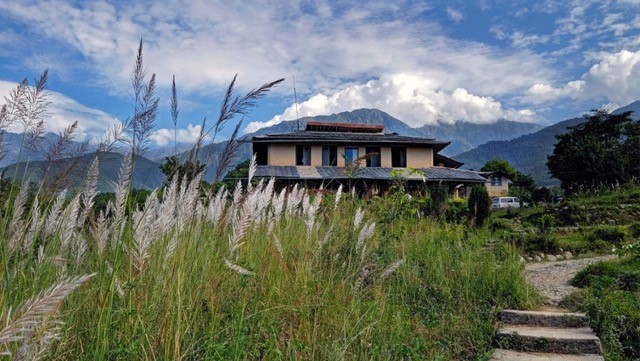
Didi Contractor (1929 – 5 July 2021) whose real name was Delia Kinzinger, was born in the USA. Her father, Edmund Kinzinger was a German national and her mother, Alice Fish Kinzinger was an American. Both were renowned painters belonging to the Bauhaus group in the early 1920s. Delia Kinzinger had grown up in Texas, USA, and spent some time in Europe also.
At the age of 11, she happened to listen to Frank Lloyd Wright and saw an exhibition of his works along with her parents. This made a lasting impression on her mind and developed her inclination for the profession of architecture. But her parents never encouraged her to pursue architecture and resultantly she completed her graduation in art at the University of Colorado.
During her university days in 1951, she fell in love with Ramji Narayan, an Indian-Gujarati civil engineering student. They got married, returned to India, and raised a family with three children. In the early years of their marriage, the couple stayed in Nashik in a joint family for a decade and after that shifted to Mumbai in the 1960s and lived in a house on the famous Juhu beach. But soon the circumstances changed, and she had to part ways with her husband and decided to settle in a small village Sidhbari near Dharamshala.
Sidhbari is situated in the foothills of Dhauladhar mountains in Kangra district of the state of Himachal Pradesh. Since then, she made Sidhbari her home and concentrated on pursuing her first love – architecture. With her artistic background, she swiftly switched to architecture and interior design. For her, there was only a medium change to clay, bamboo, slate and river stone. Once she learnt the properties of these materials and the art of handling them, there was no going back.
During the last about three decades, she has designed and built more than 15 houses in and around Dharamshala and some institutions like Nishta Rural Health, Education and Environment Centre at Dharamshala, Dharmalaya Centre for Compassionate Living at Bir, and Sambhaavnaa Institute of Public Policy and Politics at Kandwari.
A deep perusal of Didi’s architecture reveals that her buildings seem to grow from the earth and are in perfect harmony with nature. This is quite contrary to the present-day modern buildings which look to conflict with nature. A perfect yang-and-yin relationship between her buildings and the landscape around them is thus an important salient feature of her architecture. Didi herself explained, “I am very interested in using landscape as a visual and emotional bridge between the built and the natural. Look at the old buildings, they are beautiful in the landscape, and the new ones are at war with it – they say something. So, we conflict with nature, and nature will conflict with us. I imagine a building as growing, like a plant, within a landscape. Landscaping is a key to this thing of marrying the earth to the building.”
Another significant aspect of Didi’s architecture is the creative use of local materials such as mud, bamboo, river stone and slate. Over the years she has perfected the art of handling these materials in such a way that they create a feeling of belonging, cheerfulness and humbleness. Didi elaborated on this aspect, “I would like to emphasise playfulness, imagination, and celebration. By celebrating materials, noticing their qualities, and celebrating them as you put them into a building, celebrating the quality or the plasticity of the mud, and celebrating the inherent, innate and unavoidable qualities of each material. What the slate does to light, and how the materials play within nature. I try to create something as quiet as possible. What works, should just look natural, as if meant to be.”
To create an eco-friendly architecture, Didi invented a unique approach of following the ‘rhythm of the universe’ or the ‘cycles of nature’. She always tried to synchronise the process of construction with the cycles of nature so that the end product is in harmony with environs. Explaining this approach she said, “One of the many things that’s wrong today is that people are not ready to accommodate their lives to the rhythm of the universe. We don’t see the wisdom of nature. Technology should also be consistent with a humanistic agenda of making people comfortable with themselves, with one another and with nature. Eco-sensitive structures need to be built as per the season, whereas cement structures can be built quickly and at any time of the year. One of the problems with contemporary life is losing contact with the cycles of nature. When I take something out of the natural cycle, I think how it affects that cycle, and whether it can be replaced, or reused – earth from an adobe building can be reused in a vegetable garden.”
As a matter of choice, Didi was very fascinated by yet another important element of architectural design – the ‘staircase’. In all her buildings one finds a very creative use of this element vis-à-vis its location, direction, and design. She said, “In stairs, the architect is in control. I enjoy planning the experience of what you will pass, what you will have on both sides and what you are coming down or heading up towards. The staircase is often the key to organising the space in each design. In the staircases, I feel I am guiding the emotional entry of a person.”
Being an artist originally, Didi had matured the art of handling natural light in the interiors very imaginatively and artistically. An overview of her buildings reveals the emphasis she gives to this vital element of design. For her, the light is the soul of architecture. It highlights the plastic forms, shapes, geometric lines, colours and textures of materials.
Didi Contractor’s legacy extends far beyond the structures she created. Her life’s work stands as a testament to the power of vision, determination, and harmony with nature. In an era of rapid urbanization and environmental challenges, Didi’s approach to architecture serves as a beacon of sustainable living and thoughtful design. She proved that one could create beautiful, functional spaces without compromising the earth’s resources or disrupting natural cycles. Her innovative use of local materials, her respect for traditional building techniques, and her ability to seamlessly blend structures with their surroundings continue to inspire architects, environmentalists, and artists worldwide. Didi Contractor’s journey from an American-born artist to a revered architect in the Himalayas embodies the transformative power of following one’s passion and respecting the wisdom of nature.
As we remember Didi Contractor on her third death anniversary, we celebrate not just an architect, but a visionary who showed us a path to living in harmony with our environment. Her legacy lives on in every mud brick, every bamboo frame, and every thoughtfully designed space she left behind, reminding us that true sustainability is achievable through creativity, respect for nature, and a deep understanding of our place within it.
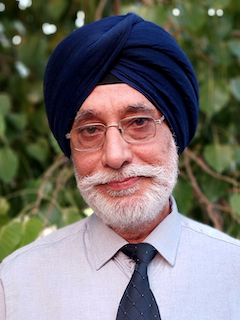
Sarbjit Bahga (b1957) is a Chandigarh-based architect, author, photo artist, and archivist. He is the Principal Architect of Bahga Design Studio LLP. Earlier, Bahga worked in the Department of Architecture, Punjab, Punjab Health Systems Corporation, and Punjab Mandi Board in various positions.
He has more than 42 years of practical experience designing various types of buildings, complexes, and large campuses. His completed works include an eclectic range of administrative, recreational, educational, medical, residential, commercial, and agricultural buildings. A monograph on his selected works titled “MODERN REGIONALISM: The Architecture of Sarbjit Bahga” has been published.
Bahga is also a keen researcher and a prolific architectural writer. He has 12 books to his credit, which include Modern Architecture in India, New Indian Homes, Le Corbusier, and Pierre Jeanneret: The Indian Architecture, Trees in Urban Habitat, Landscaping Human Habitat, New Indian Architecture -1947-2020, and Hand-Drawn Perspectives and Sketches. Bahga’s contribution to architecture has been largely recognized. He is a three-time recipient of the World Architecture Community Awards. His name has been featured in the Guinness Book of World Records for designing the “longest covered concrete corridor” in Vidya Sagar Institute of Mental Health, Amritsar.


